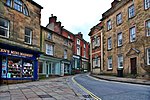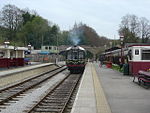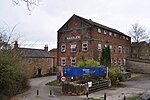Anthony Gell School
Anthony Gell School is a coeducational secondary school and sixth form located in Wirksworth in the English county of Derbyshire.It began as a Free Grammar School established by Anthony Gell in 1576. The school moved to its present site in 1908 and became a voluntary controlled school in 1944. It became a coeducational comprehensive school in 1965. As a voluntary controlled school, it is supported by the Anthony Gell School Foundation charitable trust, and administered by Derbyshire County Council.Anthony Gell School offers GCSEs and BTECs as programmes of study for pupils, while students in the sixth form have the option to study from a range of A Levels, OCR Nationals and further BTECs. As of 2011 the school's GCSE scores were increasing.
Excerpt from the Wikipedia article Anthony Gell School (License: CC BY-SA 3.0, Authors).Anthony Gell School
Wood Street, Derbyshire Dales
Geographical coordinates (GPS) Address Phone number Website External links Nearby Places Show on map
Geographical coordinates (GPS)
| Latitude | Longitude |
|---|---|
| N 53.0791 ° | E -1.5715 ° |
Address
Anthony Gell School
Wood Street
DE4 4DX Derbyshire Dales
England, United Kingdom
Open on Google Maps










